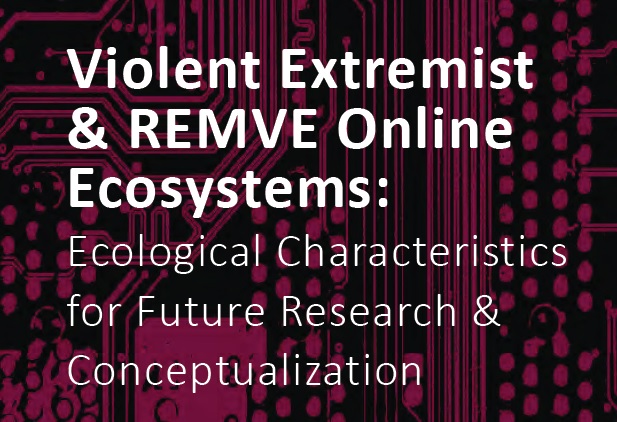Violent Extremist & REMVE Online Ecosystems: Ecological Characteristics for Future Research & Conceptualization

Abstract
Despite this increasing focus on violent extremist ecosystems in the online sphere, it is unclear the extent to which ecological terms in literature on extremism—and particularly literature focused on the online space—are empirically validated or even consistently used. Indeed, there remain fundamental gaps in understanding and defining what we mean when we discuss the ecology of violent extremism and online violent extremist ecosystems. These gaps have notable implications for defining what an online ecosystem actually is—including its characteristics, impact, scope, and reach—and identifying appropriate policy responses to address them. This is of particular importance in the context of the growing volume of studies looking at racially and ethnically motivated (REMVE) communities online and across multiple platforms.
Based on findings from a structured literature review examining the use of terms “ecosystem” and “ecology” in terrorism and violent extremism studies and related disciplines, this research brief presents a list of ten ecological characteristics for further consideration by those working in research, policy, and practice focused on online violent extremist ecosystems. Brief examples are provided of how these characteristics might be conceptualized in research into REMVE online ecosystems, given the increased attention REMVE online ecosystems have garnered in recent years.
This review of the literature indicates that the concepts and terms “ecosystem” and “ecology” have potential, if limited, analytical utility for policymakers and academics, beyond their descriptive and currently largely metaphorical use in the literature. Despite the clear limitations which accompany the translation of natural science terminology into terrorism and violent extremism studies, certain characteristics of ecosystems may present specific analytical perspectives useful to those seeking to address or study terrorism and violent extremism online. For instance, although digital environments are not true ecological systems in the biological sense, delineating and defining conceptual components of an ecosystem may provide a shared conception when used to describe how extremist violence emerges from online environments, or when used to interpret these descriptions in a policy and practice setting. Descriptive definitions and the proposed advantages and limitations of using characteristics related to ecosystems are addressed in the following sections.
Hutchinson, Jade, Julian Droogan, Lise Waldek, & Brian Ballsun-Stanton. Violent Extremist & REMVE Online Ecosystems: Ecological Characteristics for Future Research & Conceptualization. Washington, D.C.: RESOLVE Network, 2022. https://doi.org/10.37805/remve2022.5.